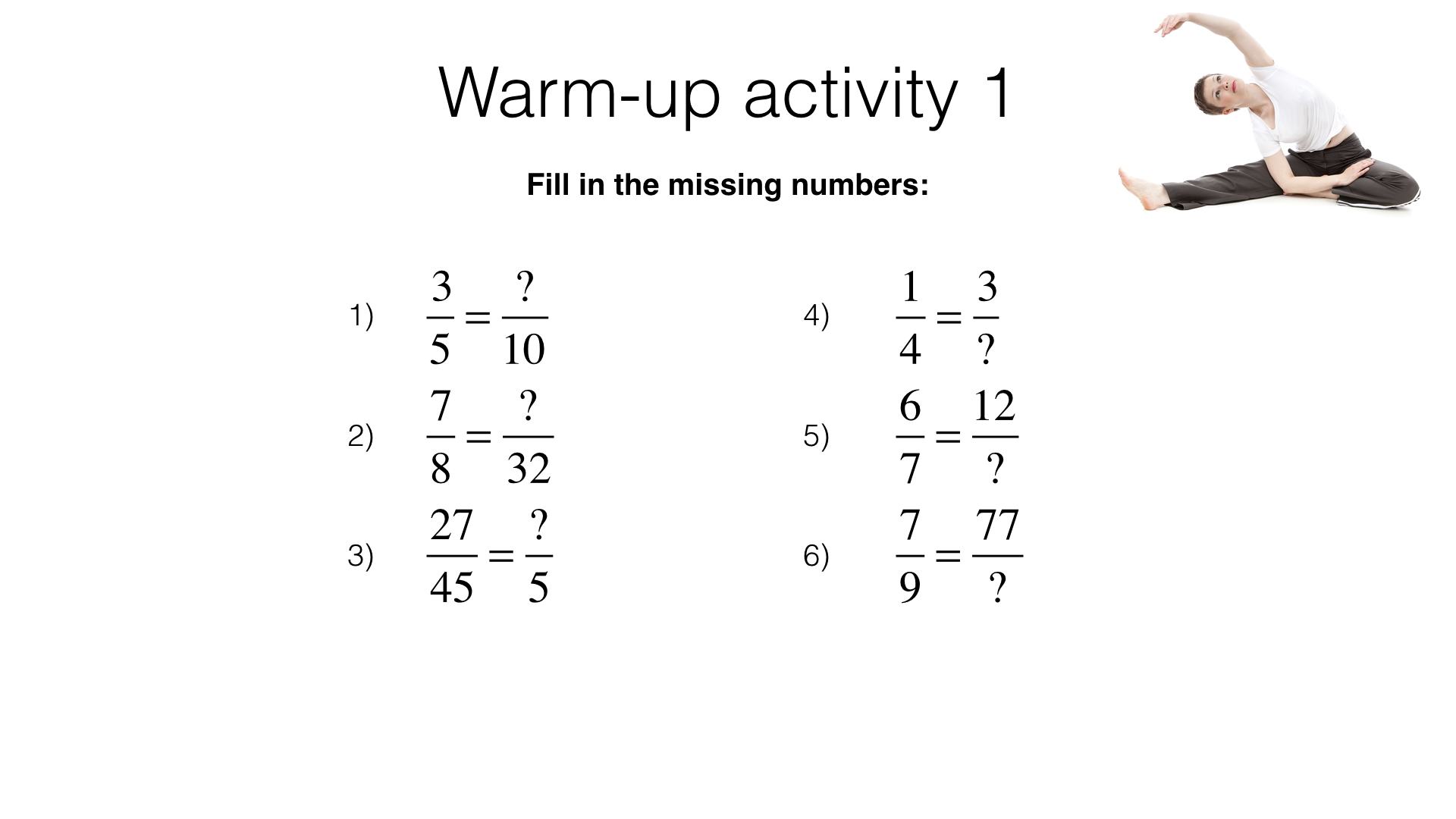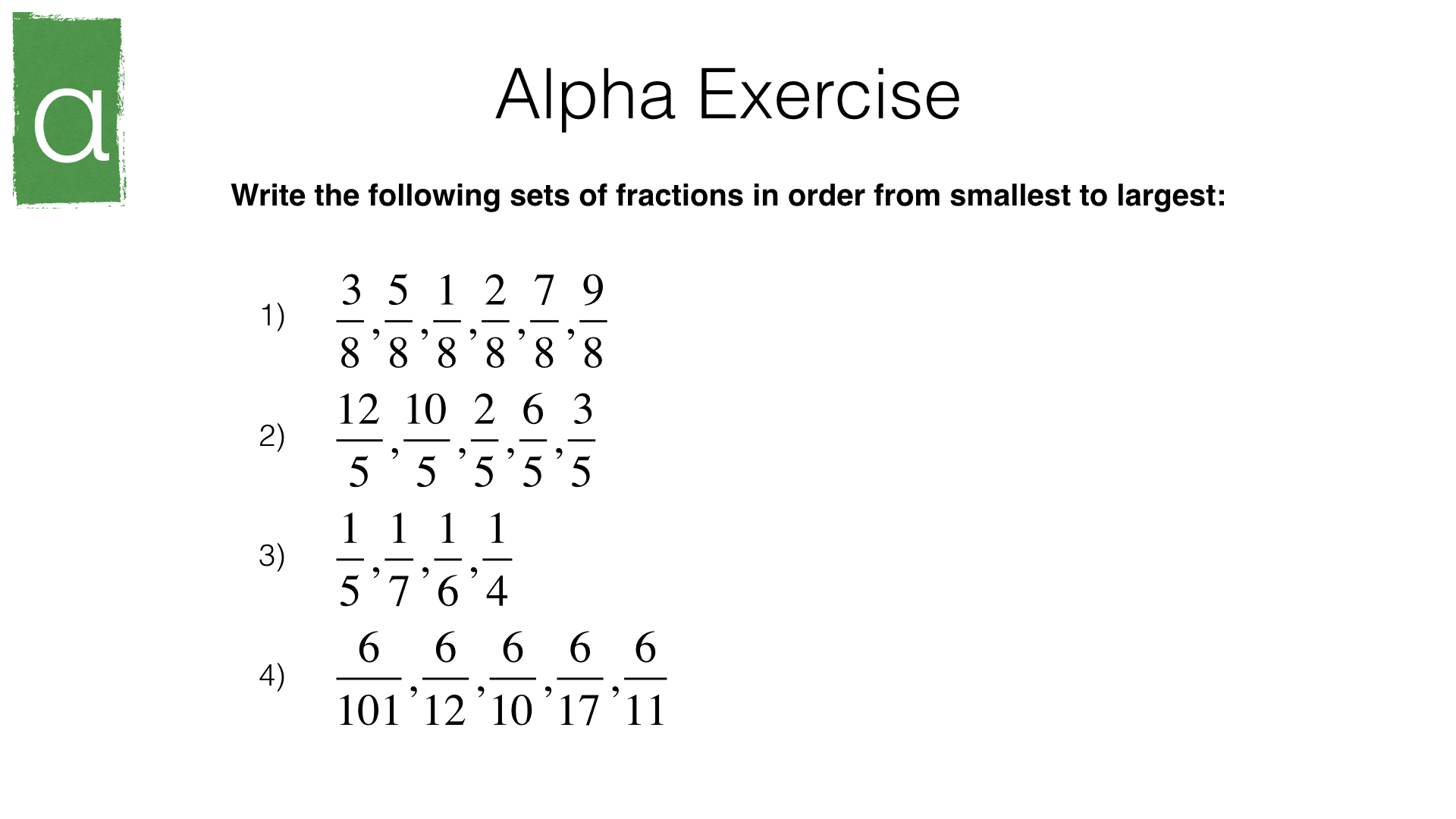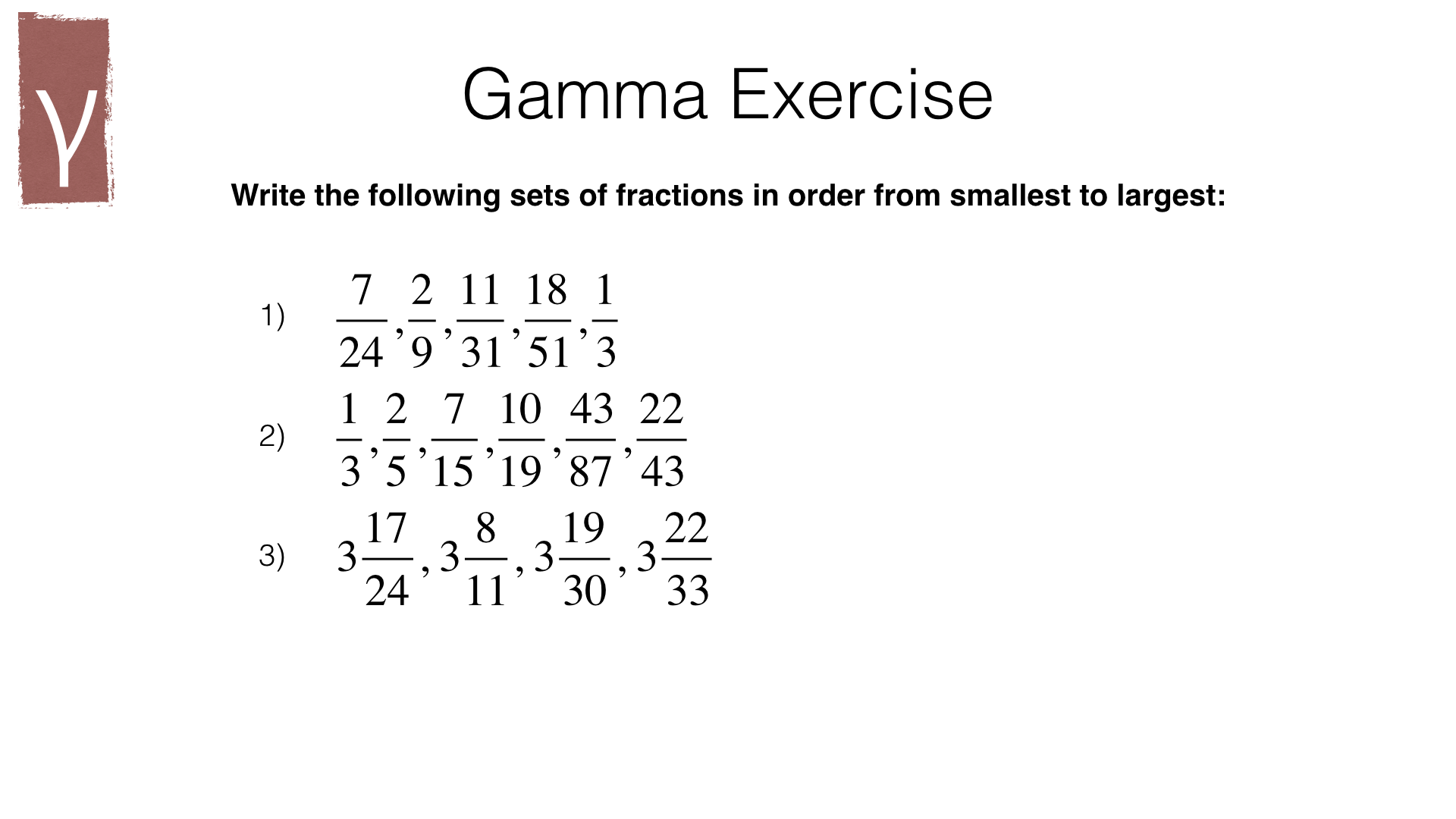This is the students’ version of the page. Log in above for the teachers’ version.
Prerequisites
Ordering fractions
Click the tabs for extension tasks…
You have four cards, numbered 5, 6, 7 and 8. You may pick one card to be the numerator and one card to be the denominator of a fraction.
- What is the smallest fraction you can make?
- What is the largest fraction you can make?
- \(\dfrac{5}{8}\)
- \(\dfrac{8}{5}\)
You have four cards, numbered 5, 6, 7 and 8. You may pick one card to be the numerator and one card to be the denominator of a fraction.
- What is the second largest fraction you can make?
- What is the third largest fraction you can make?
- What is the largest proper fraction you can make? (A proper fraction must be strictly less than 1.)
- \(\dfrac{7}{5}\)
- \(\dfrac{8}{6}\)
- \(\dfrac{7}{8}\)
You have four cards, numbered 5, 6, 7 and 8. You may pick one card to be the numerator and one card to be the denominator of a fraction.
- How many different fractions can you create?
- 12 different fractions
Teacher resources
Teachers: log in to access the following:
- Slides in PPTX (with click-to-reveal answers)
- Slides in PDF (one slide per page, suitable for importing into IWB software)
- Worksheet (with space for student work)
- Handout (slides with exercises only; 4 per page for reduced printing)
- Skills drill worksheet (20 questions on one side of A4; answers included)
Links to past exam and UKMT questions
Teachers: log in to access these.
Unlimited practice questions: Ordering fractions
In the real world
Teachers: log in to view this content.









